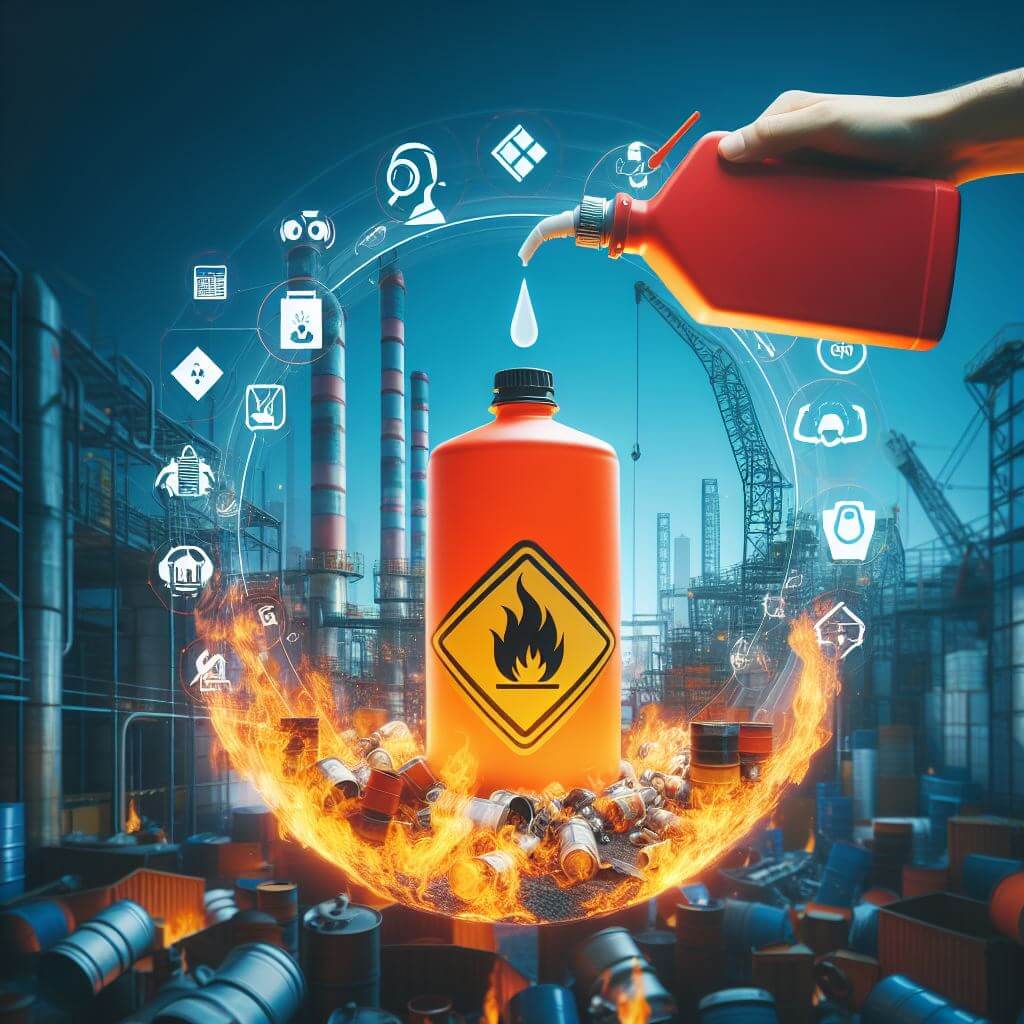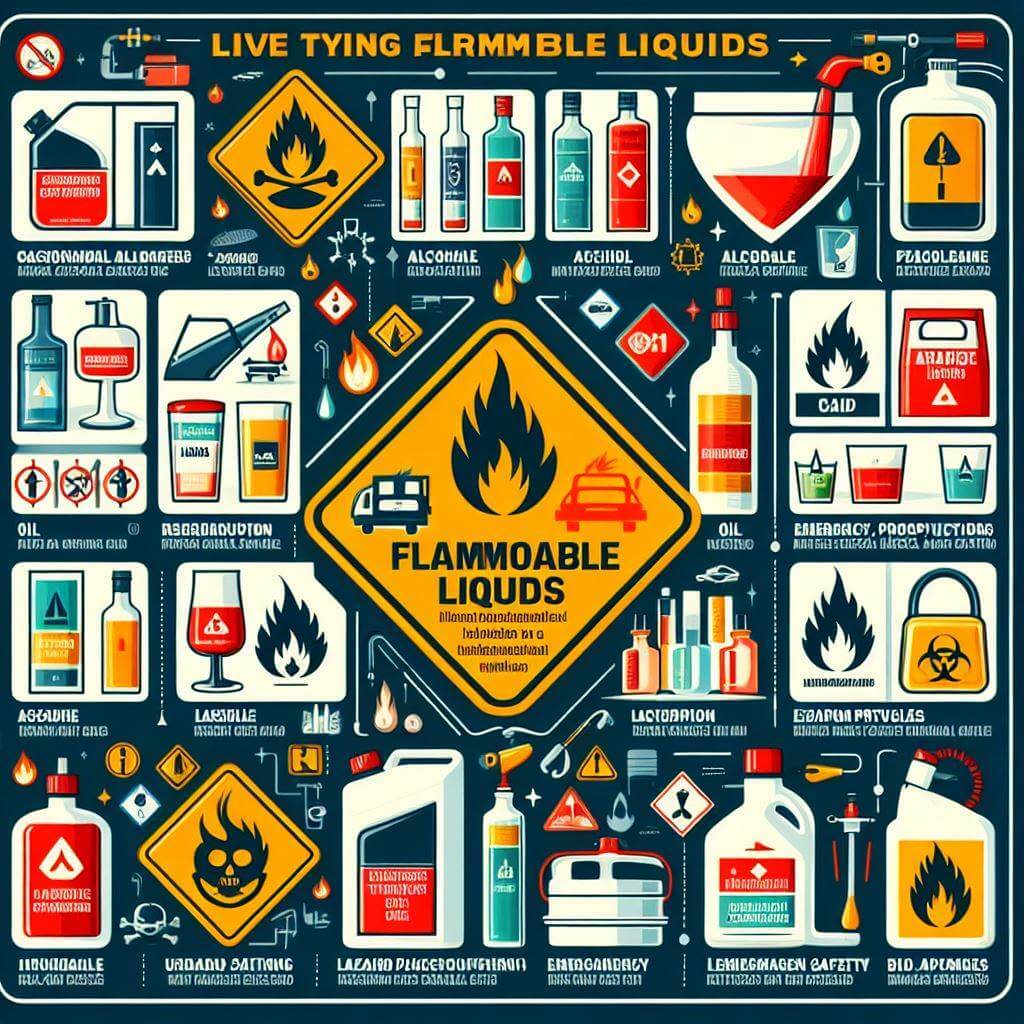- Home
- How to Dispose of Household Hazardous Waste
- How to Dispose of Flammable Liquids
How to Dispose of Flammable Liquids - A Comprehensive Guide
Disposing of flammable liquids requires careful planning and strict adherence to safety protocols. Essential to this process is the integration of risk management strategies, ensuring that the disposal does not pose a threat to people, property, or the environment.
Knowledge and compliance with proper disposal methods can mitigate potential hazards, making risk management an indispensable part of the procedure.
While the task may seem daunting, understanding the correct procedures for disposing of flammable liquids can significantly reduce the risks involved. This guide aims to navigate you through safe disposal practices, emphasizing the importance of environmental responsibility and personal safety.
By following these guidelines, you can ensure that you are not only compliant with regulations but also contributing to a safer community.

Understanding Flammable Liquids and Their Hazards
Flammable liquids pose significant hazards if not managed properly. Their volatile nature requires that fire extinguishers be readily available when handling these substances. Understanding the difference between flammable or combustible materials is crucial for ensuring safety and compliance.
1. The Basics of Flammable and Combustible Liquids
Common household items like linseed oil and nail polish remover are examples of flammable and combustible liquids. These substances require careful handling due to their ability to ignite under certain conditions.
Distinguishing Between Flammable and Combustible Liquids
Flammable liquids ignite easily at room temperature, while combustible liquids require higher temperatures to ignite. Knowing the distinction helps in applying the appropriate safety measures for storage and disposal.
2. Regulatory Guidelines for Handling Flammable Materials
Materials such as lighter fluid, heating oil, paint remover, and methylated spirits are classified as highly flammable. Regulations mandate that they be handled with care, especially when their vapor temperatures are below 100 degrees Fahrenheit.
National and Local Regulations Overview
Both national and local regulations provide frameworks for the safe handling, storage, and disposal of flammable substances. These laws are designed to protect individuals and the environment from the risks associated with hazardous materials.
Safeguarding Through Proper Storage and Handling

Proper storage and handling of materials like lighter fluid, heating oil, and paint remover are critical. These highly flammable substances, especially when stored above 100 degrees Fahrenheit, pose significant risks.
1. Storing Flammable Liquid Waste
Store unused liquids and contaminated flammable liquids in clearly marked containers. It’s vital to use bulk waste containers and limit the amount of flammable liquid to prevent dangerous chemical reactions. Ensure waste material is picked up regularly and always wear the proper protective personal equipment when handling hazardous or flammable liquid waste.
Best Practices for Safety and Efficiency
Adhering to best practices for safety and efficiency is paramount when dealing with flammable liquids. This includes proper labeling, regular training, and the implementation of spill containment measures to prevent accidents.
2. The Importance of Proper Labeling
For hazardous liquids in the workplace, proper labeling is essential. Labels provide critical information on safe handling procedures or warnings and should always reference the Material Safety Data Sheet (MSDS).
Label Requirements and Recommendations
Labels on containers such as paint cans and steel drums should clearly indicate if the content is flammable or combustible. Storing these materials in designated flammable cabinets or storage cabinets is recommended to enhance safety.
Strategies for Disposing of Flammable Liquids Safely

When disposing of flammable liquids, it's crucial to adhere to hazardous waste disposal guidelines and avoid pouring liquids down the drain. Understanding your role as a waste generator and the relevant environmental laws is key to a safe and compliant disposal process.
1. Methods for Disposal

Paint thinner, being a common flammable liquid, requires careful disposal. It's essential to follow best practices to prevent harm to the environment or individuals.
Evaporation Techniques
Evaporation is a method used for disposing of small quantities of flammable liquids. However, it must be done in a controlled environment to prevent the accumulation of hazardous fumes.
Solidification Processes
Solidification involves converting liquid waste into a solid form, making it safer for disposal. Waste disposal companies often use this method for large quantities of hazardous liquids, including those that are flammable.
2. Combining Safety with Environmental Responsibility
When disposing of hazardous waste, it's crucial to strike a balance between ensuring safety and protecting the environment. This means choosing disposal methods that minimize potential harm to both people and the planet. By prioritizing eco-friendly practices, you contribute to a safer, cleaner world while handling dangerous substances responsibly.
Choosing Eco-Friendly Disposal Methods
For substances like paint thinner, which is a common flammable liquid, opting for eco-friendly disposal methods is key. Rather than pouring it down the drain or into the ground, which can lead to pollution and harm wildlife, consider using a waste disposal service that specializes in handling such materials. These services often have processes in place to recycle or dispose of paint thinner and similar substances in a way that lessens environmental impact.
Final Thoughts on Managing Flammable Liquid Waste
Proper disposal of flammable liquids, like rubbing alcohol, isn't just about following regulations; it's about ensuring safety and environmental well-being. Containers should be labeled accurately, and flammable waste material should never exceed 140 degrees Fahrenheit (60 degrees Celsius) to prevent accidents.
By engaging with professional waste management services, you can dispose of waste properly, ensuring that hazardous materials are handled with the utmost care. This not only keeps you compliant but also safeguards your community and environment.
1. Enhancing Safety and Compliance in Disposal Practices
In the United States, getting rid of flammable liquids requires adherence to strict guidelines. Combustible materials should never be disposed of in regular garbage. Containers are properly labeled and stored to prevent accidents. This level of diligence ensures safety and compliance, reducing the risk of hazardous incidents significantly.
Implementing a Continuous Improvement Plan for Hazardous Waste Management
To manage flammable substances effectively, a continuous improvement plan is essential. This involves regularly reviewing and enhancing safety measures, such as ensuring hazardous chemicals are properly labeled and stored in designated storage areas or portable tanks. Safe storage not only prevents accidents but also reinforces a culture of safety and responsibility towards hazardous waste management.